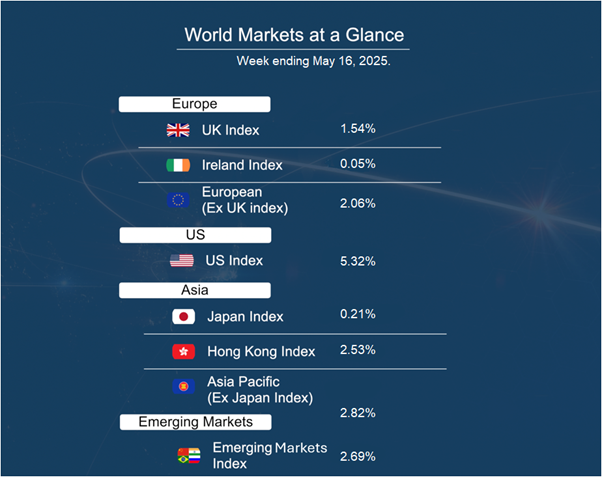Powell said the economic environment “has changed significantly” since then and the central bank’s stance would “reflect our assessment of those changes”.
Economic data painted a mixed, but generally stable picture. The University of Michigan’s consumer sentiment index edged down to 50.8 in May, slightly below expectations, reflecting lingering concerns about inflation and trade uncertainty. While sentiment remains subdued, the underlying economy continues to show resilience.
Moody’s downgrade of the U.S. credit rating from Aaa to Aa1 over the weekend attracted attention, citing concerns about debt levels and refinancing risks in a higher-rate environment. However, this move mainly brings Moody’s in line with Fitch and S&P, which made similar adjustments some time ago. Importantly, U.S. Treasuries remain the world’s benchmark for safety and liquidity, with no immediate threat to their trusted status.
Across the Atlantic, preliminary figures showed the UK economy delivered an upside surprise, growing 0.7% in the first quarter—its fastest pace in nearly a year. The expansion was driven by strength in services, investment, and exports, as businesses front-loaded activity ahead of U.S. tariffs introduced in early April. The result exceeded expectations and marked a notable pick up from just 0.1% growth in Q4 2024.
There was more economic growth data to digest at the end of the week. Data revealed Japan’s economy contracted by 0.2% in the first quarter of 2025, slightly worse than the expected 0.1% decline and marking the first quarterly contraction in a year. The slowdown follows 0.6% growth in Q4 and reflects growing concerns over the impact of U.S. trade policies under President Trump, as well as softer external demand—particularly from key partners like China. The weaker-than-expected GDP print highlights Japan’s vulnerability to global trade dynamics and may increase pressure on policymakers to support growth.
This week’s data highlights include Chinese retail sales, industrial production, and the unemployment rate. In the Eurozone, we’ll see consumer confidence figures, while Japan releases its trade balance. The UK reports April’s inflation rate, along with consumer confidence and retail sales. PMI data from the U.S. and across Europe will also be in focus.
Kate Mimnagh, Portfolio Economist



